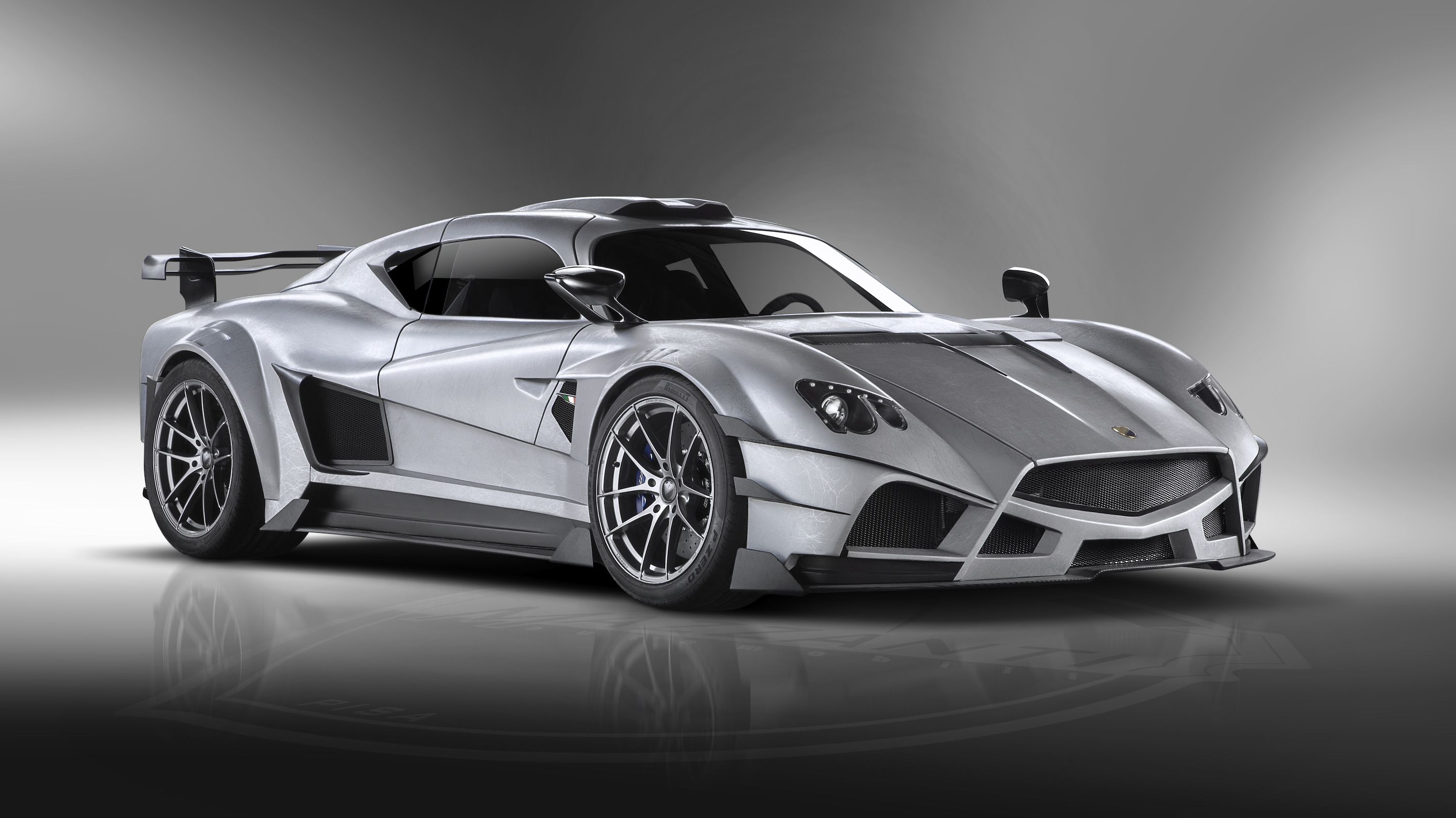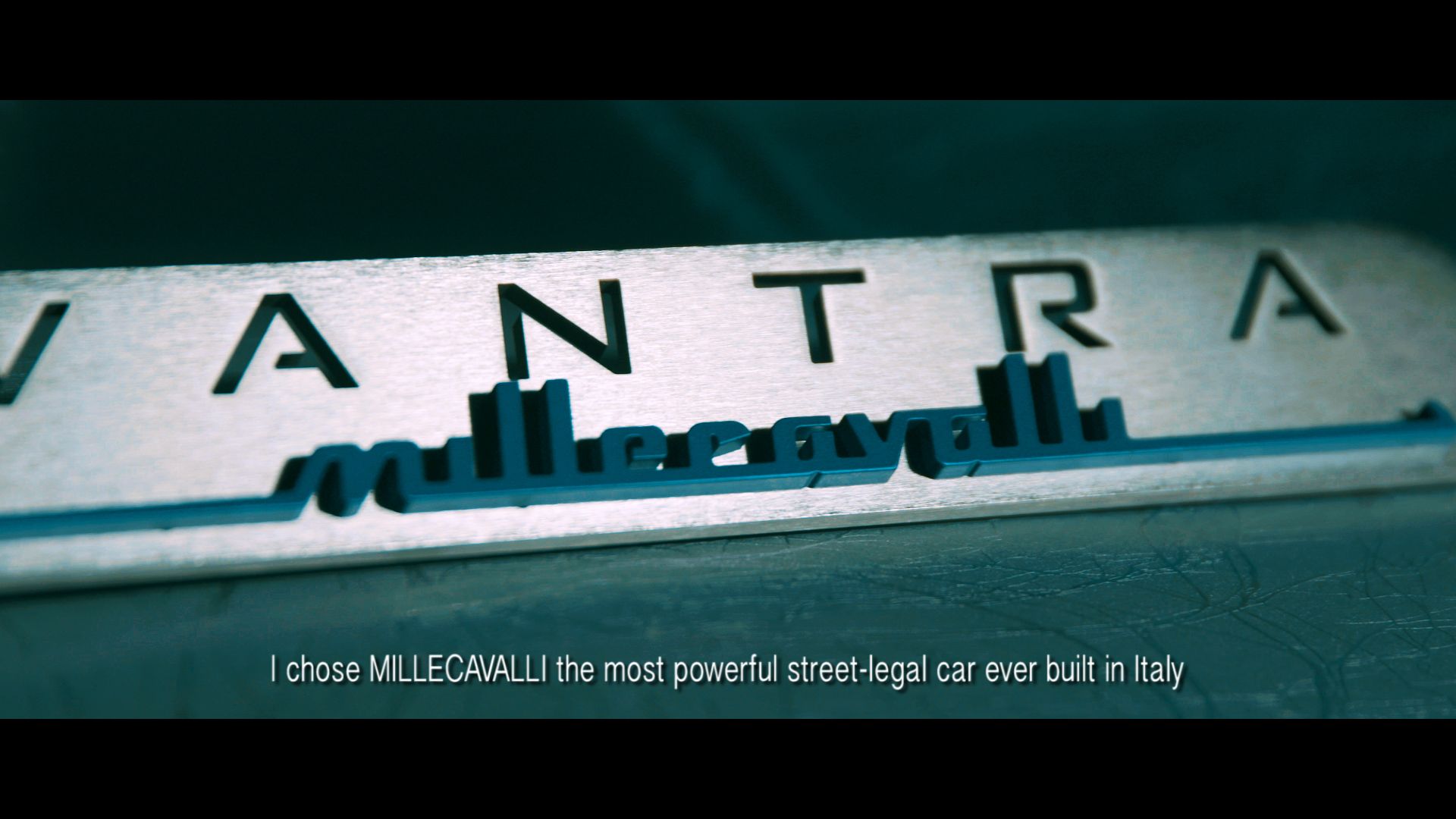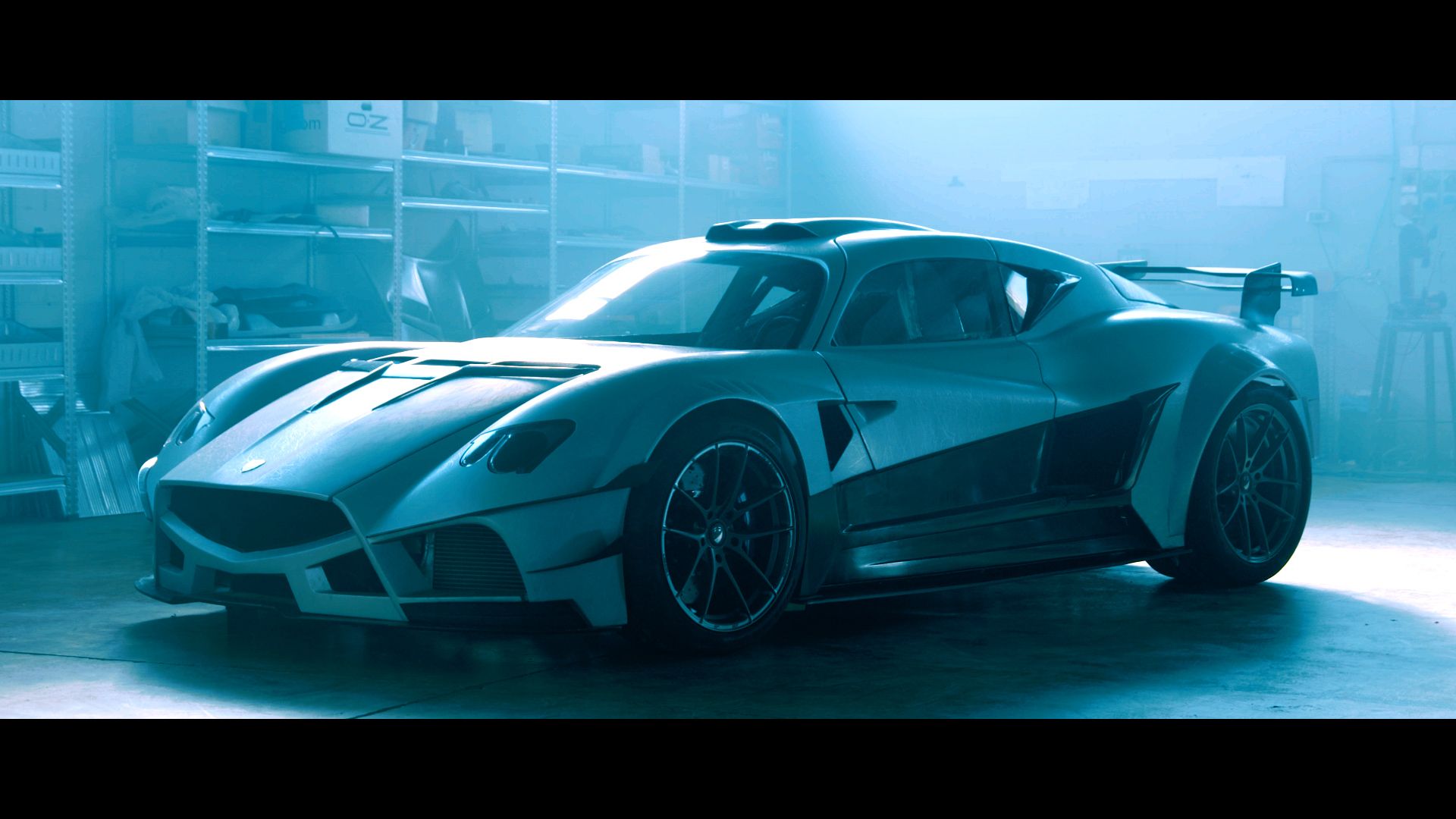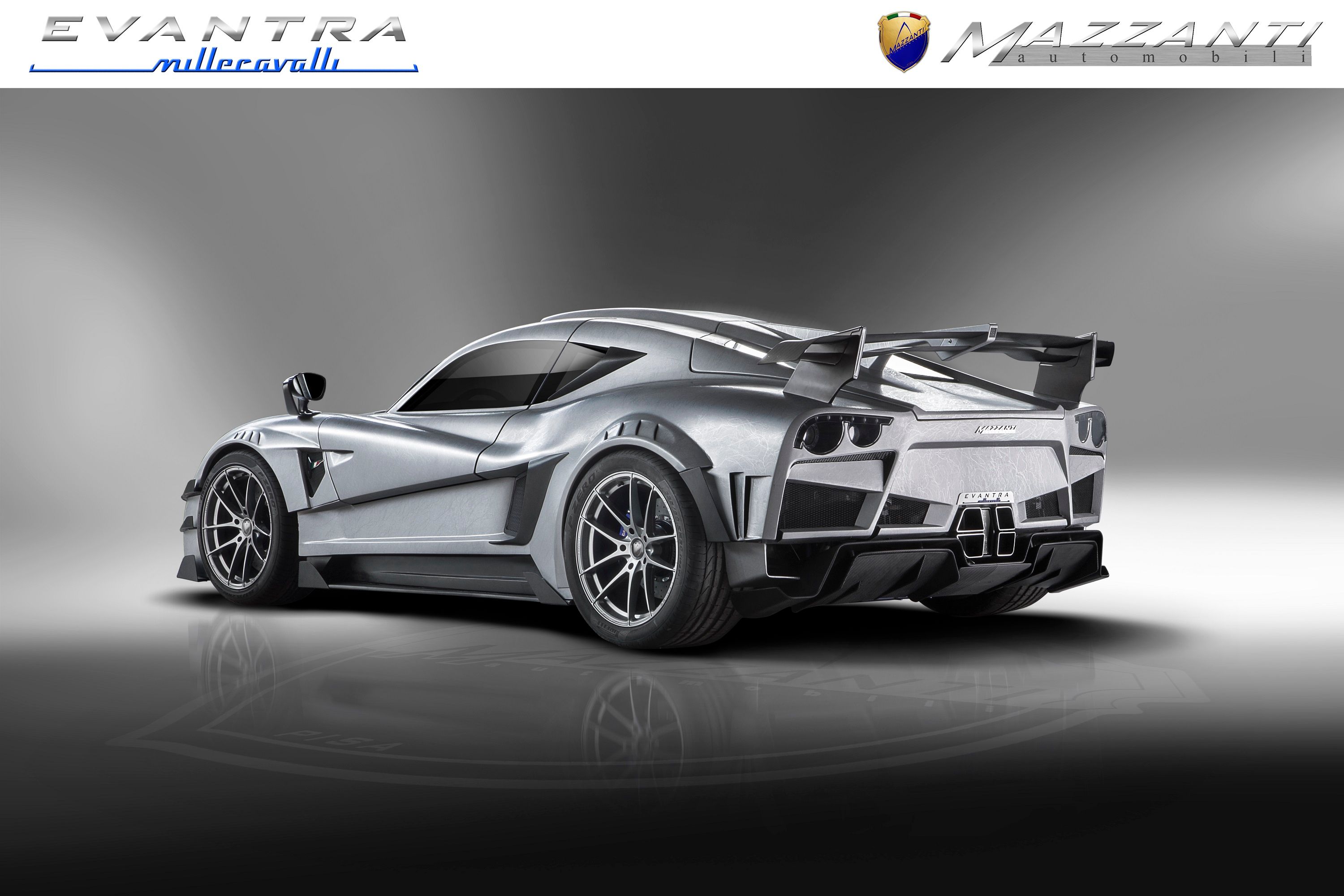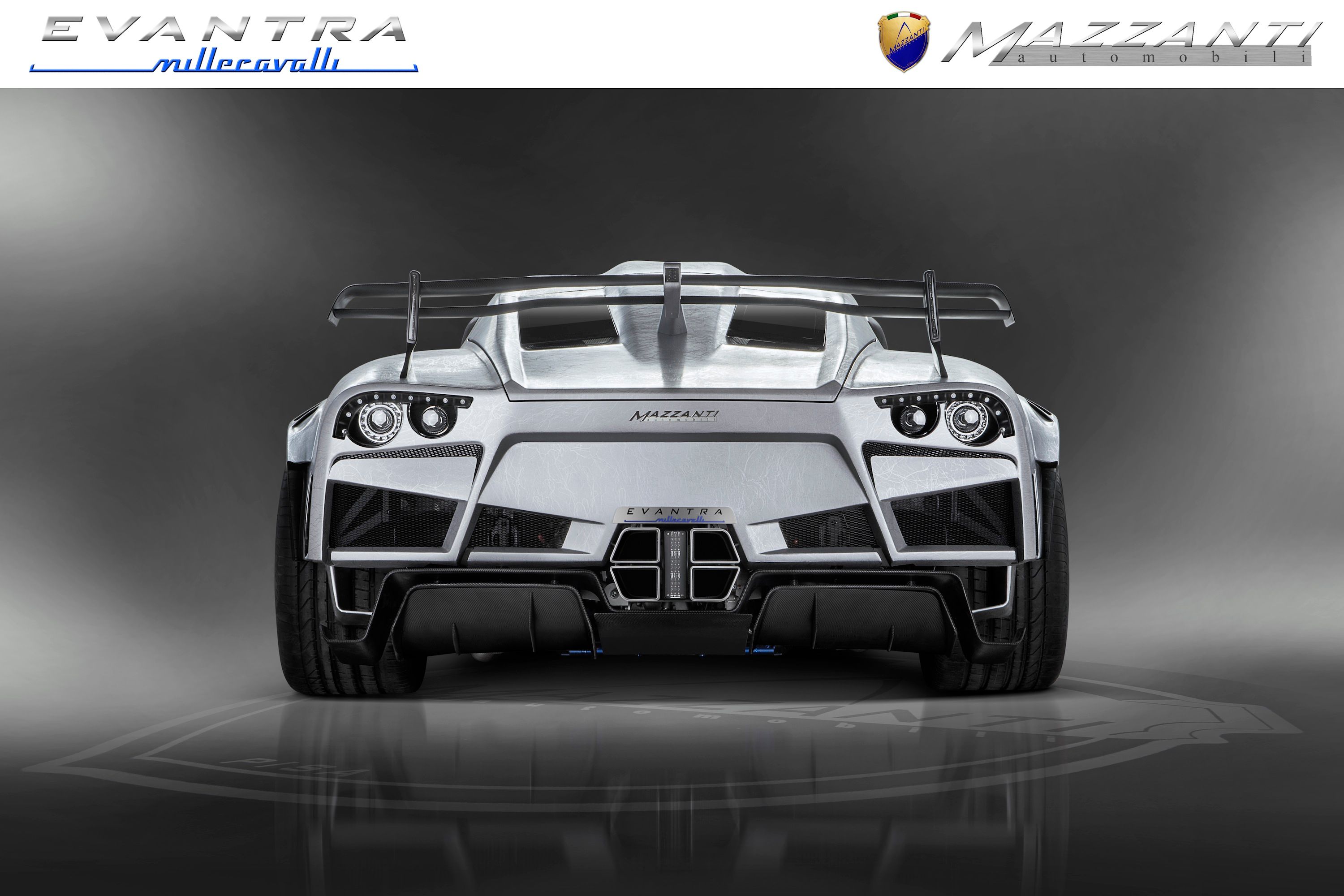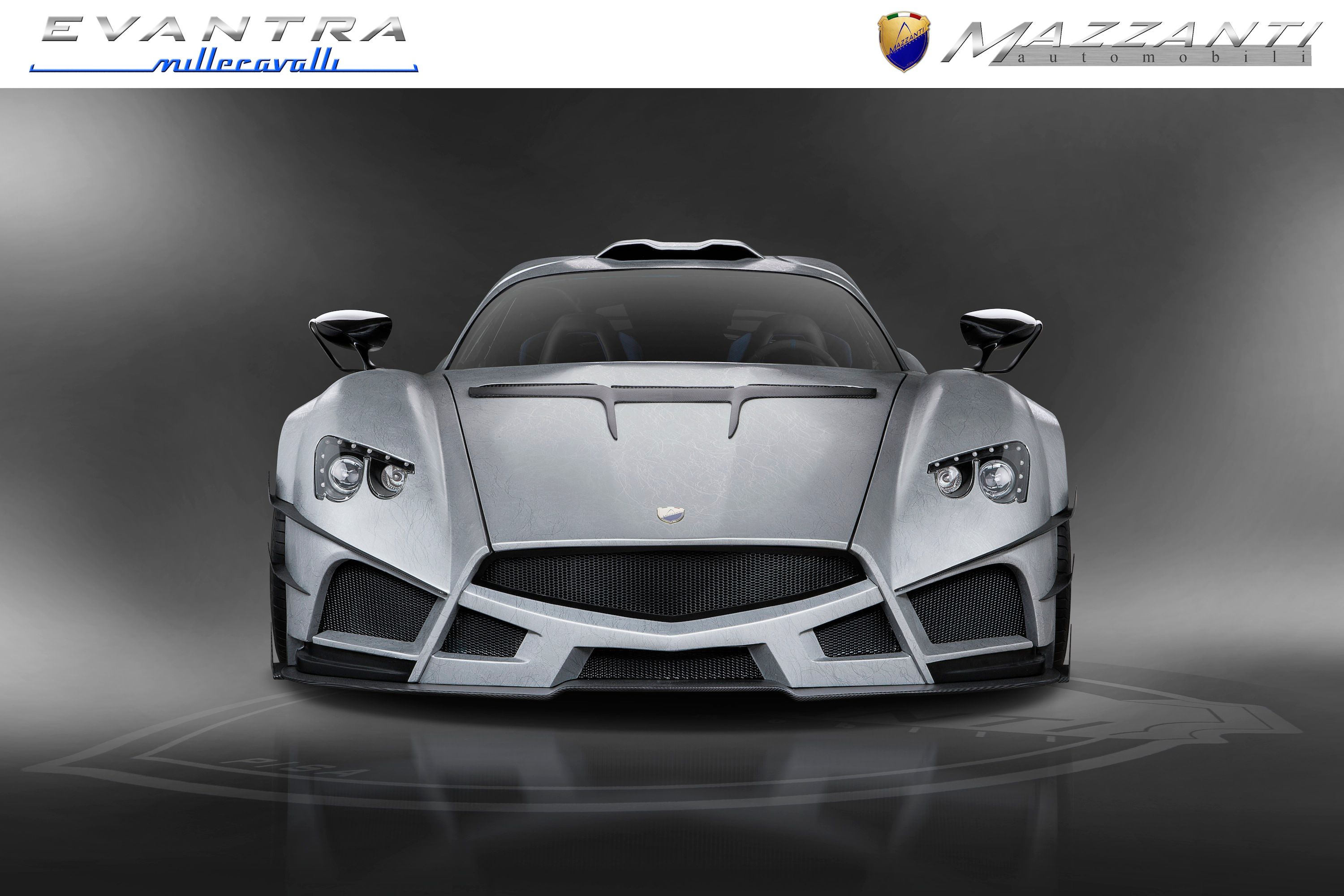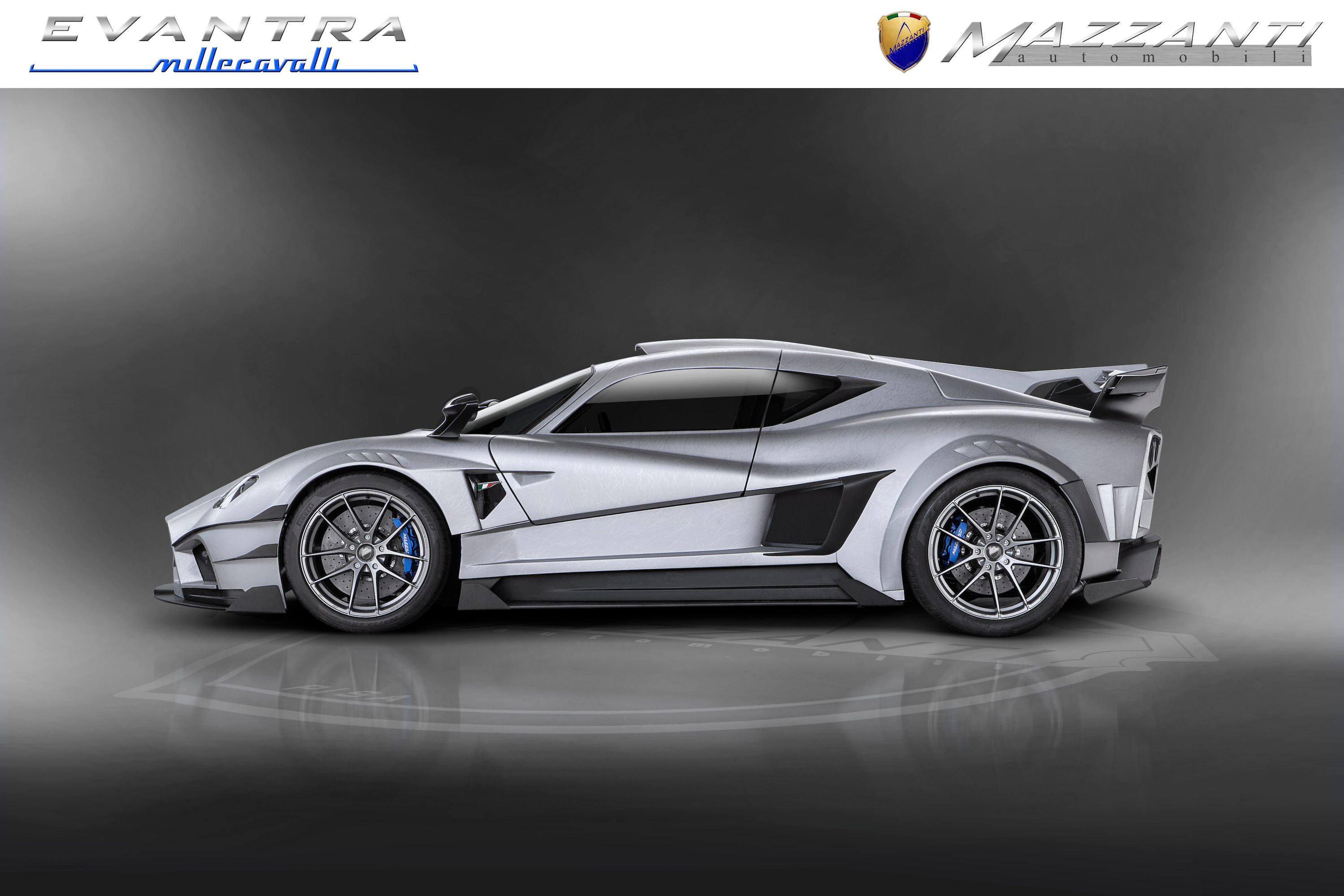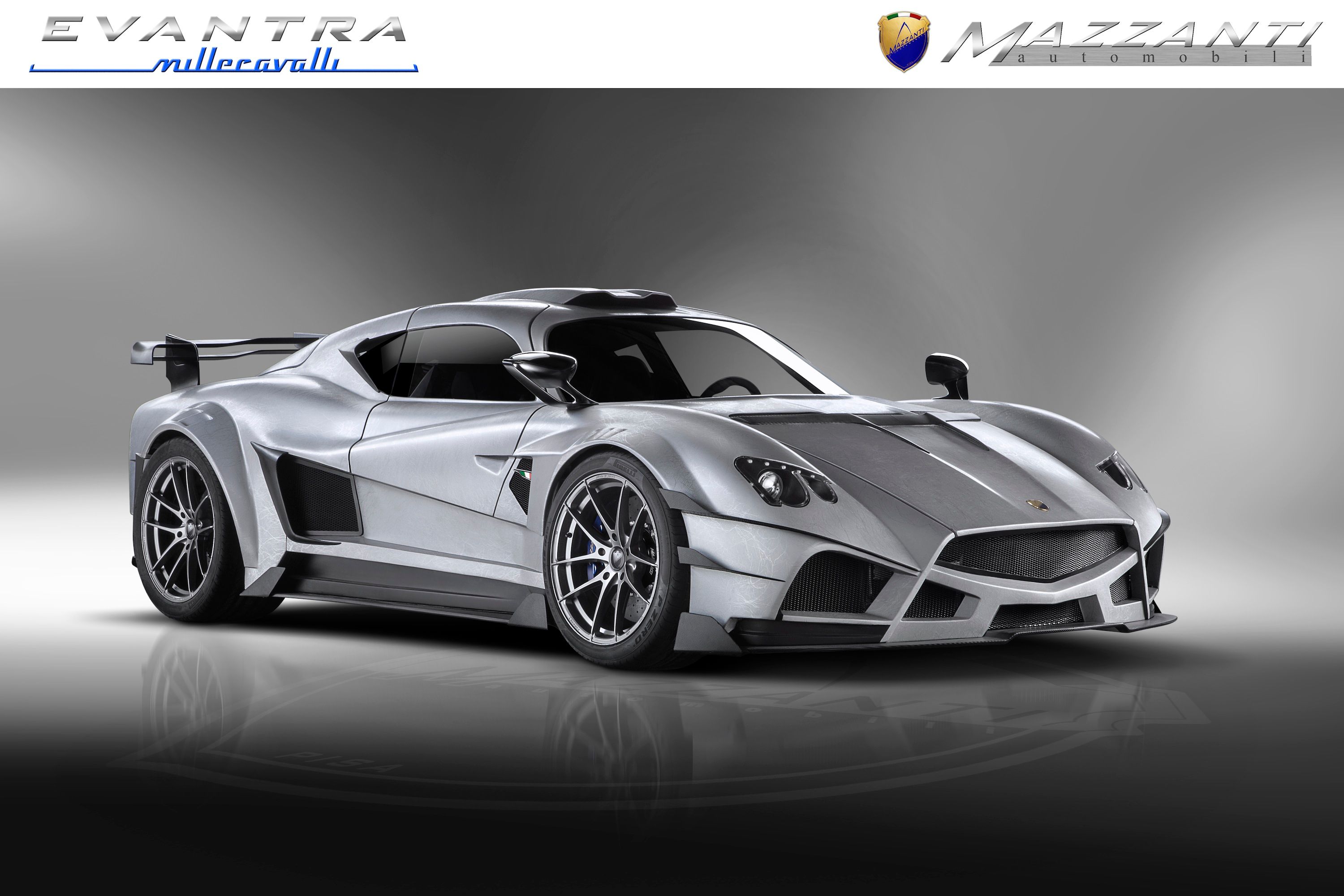The Mazzanti Evantra is an Italian supercar->ke177 launched at the 2013 Top Marques Show->ke1414 in Monaco. The high-performance coupe->ke141 was created by Mazzanti Automobili->ke4126 founder Luca Mazzanti and designer Zsolt Tarnok. Work on the mid-engined coupe began in 2008 and the first prototype was shown in 2011, two years before the production model saw the light of day. Output is officially limited to only five units per year.
Three years have passed since Mazzanti unleashed the Evantra->ke4159 and information about the supercar, including pricing and actual availability, is still scarce. But, even though we don't know how many Evantras have been built as of 2016, we do know that the Italian company is still active, having showcased the supercar at every Top Marques event since the official debut. Come 2016 and Mazzanti has showcased a more extreme version of the Evantra.
Internally known as project EV-R, this new iteration goes by the name Evantra Millecavalli and Mazzanti describes it as "the most powerful street-legal hypercar ever built in Italy." Although many details are still under wraps, the company released the first official photos of the supercar at its world premiere at Salone Auto Torino. Keep reading to find out what we already know.
Updated 06/08/2016: Mazzanti unveiled the new Evantra Millecavalli at the Salone Auto Torino – Parco Valentino 2016. Continue reading to learn more about the new supercar.
Continue reading to learn more about the Evantra Millecavalli.
2017 Mazzanti Evantra Millecavalli
- Make: Array
- Model: 2017 Mazzanti Evantra Millecavalli
- Engine/Motor: V8
- Horsepower: 1000
- Torque: 885
- [do not use] Vehicle Model: Array
Exterior
Not surprisingly, the Millecavalli is an Evantra with a more aggressive aerodynamic kit and looks like a race car ready to set a new Nurburgring record. Up front, most of the styling cues of the original Evantra are still in place. The supercar sports the same headlamps, the F1-inspired nose, the trapezoidal grille with the V-shaped lower section, and massive side vents. However, Mazzanti redesigned the lower bumper to include a bigger diffuser and race-like canards. The front hood was also revised and now features three large vents and two downforce-enhancing elements. The roof scoop has been extended toward the windscreen and it is wider and flatter.
Changes are significant on the sides as well. First up, the Millecavalli runs on new multi-spoke wheels that are probably significantly lighter than the standard units and appear to be wrapped in track-spec tires. The flared wheel arches suggest that the rims are also wider. The massive side vents are now larger, while the side skirts have been extended to match the wider fenders.
Around back, the deck lid sports a large, race-inspired wing, while the beefier rear fenders have additional vents toward the rear. The taillights and most of the upper fascia remained unchanged, but the lower section is quite different. The first thing that catches the eye is the new exhaust layout, with four outlets instead of two, and the redesigned, race-spec diffuser. The side body extensions have been removed, giving the car a more track-ready appearance.
While the standard Evantra is available with either a carbon-fiber and composite (Pro-Body) or aluminum body (One-Body), the Millecavalli is likely to be offered in carbon only.
Interior
The interior of the Millecavalli is still a mystery, but if the exterior is any indication, the cabin should blend features from the standard Evantra with a number of race-spec components. The Evantra has a rather unusual dashboard configuration with the instrument cluster positioned atop the center stack. This feature could carry over to the Millecavalli, but expect Mazzanti to have redesigned the center stack to be oriented toward the driver. With more horsepower and speed at its disposable, the driver should have access to the car's essential information without taking his eyes off the road.
We also expect the Millecavalli to feature a redesigned, multi-function steering wheel, race-spec carbon seats, and lightweight door panels devoid of any soft-touch surfaces. The amount of carbon-fiber elements should also increase as Mazzanti is probably looking to ditch a few hundred pounds off the Evantra Pro-Body's 2,866 pounds.
The infotainment system will probably get a significant update and maybe even a new app that allows the driver to analyze the performance of the car on the race track.
Drivetrain
Fortunately enough, Mazzanti released some details about the car’s drivetrain. Not just more aggressive by design, the Millecavalli also received an extensive upgrade under the hood. The previous 7.0-liter V-8 engine, which was based on a Chevrolet big-block unit, was replaced by a new, bi-turbo, 7.2-liter, while output has increased from 701 to 1,000 horsepower. For those of you who haven’t noticed yet, the actual output is in the car’s name, as "mille cavalli" is Italian for "a thousand horses." Torque has also increased from 625 to "more than" 1,200 Nm (885 pound-feet). All that power travels to the rear wheels through a specifically developed six-speed sequential transmission. Yup, you rear that right. There's no all-wheel drive. Sweet!
Mazzanti says that these figures translate into a 0-to-60 sprint of only 2.7 seconds, which is a half-second improvement over the standard Evantra. Top speed is estimated at 250 mph, a significant upgrade from the Evantra’s 217-mph rating. Although the Millecavalli isn't the fastest production supercar around, its top speed is definitely impressive.
Prices
It's way too early to talk about prices at this point, but considering that the standard Evantra was launched with a starting price of around $800,000, the Millecavalli is likely to fetch in excess of $1.2 million. Mazzanti said it will build only 25 units, but there's no info as to when it will go on sale and how long will it take to deliver all of them. Judging by the company's slow output for the Evantra, the Millecavalli will be in production for at least four years unless the Italians do something to expand their capacity.
Competition
Pagani Huayra BC
Comparing Pagani, a company that has already made a name for itself, with an obscure brand like Mazzanti may seem blasphemous, but in the end, both the Huayra BC and the Evantra Millecavalli are very limited, boutique supercars. The Huayra BC was unveiled in 2016 as a track-ready version of the standard model with a beefed-up 6.0-liter V-12 engine that's rumored to deliver close to 800 horsepower. While it's less powerful than the Millecavalli, the Huayra BC is supposed to be just as quick thanks to its curb weight of only 2,685 pounds and a race-inspired aerodynamic package. The winged supercar will be built in only 20 units and sold for at least $3 million a pop, according to various sources. That's a whole lot more than Mazzanti will likely ask for a Millecavalli, but Pagani's sticker is somewhat justified given the cachet and exclusivity that comes with the brand.
Find out more about the Pagani Huayra BC here.
Conclusion
Unlike most obscure companies that surface out of nowhere to promise outstanding supercars with more than 1,000 horsepower, Mazzanti has actually produced a handful of cars in its short existence. The Italians started off with the Antas V8 GT in 2006, continued with the Vulca S in 2009 (both under the Faralli & Mazzanti name), and then launched the Evantra in 2013. However, the fact that there's still very little information about the Evantra and not so many sightings of the car apart from the company's presence at Top Marques makes us question Mazzanti's ability to actually maintain a production run or even sell as many units as it's planning to produce. We'll just have to wait for the Millecavalli to hit the production line for a proper conclusion.

